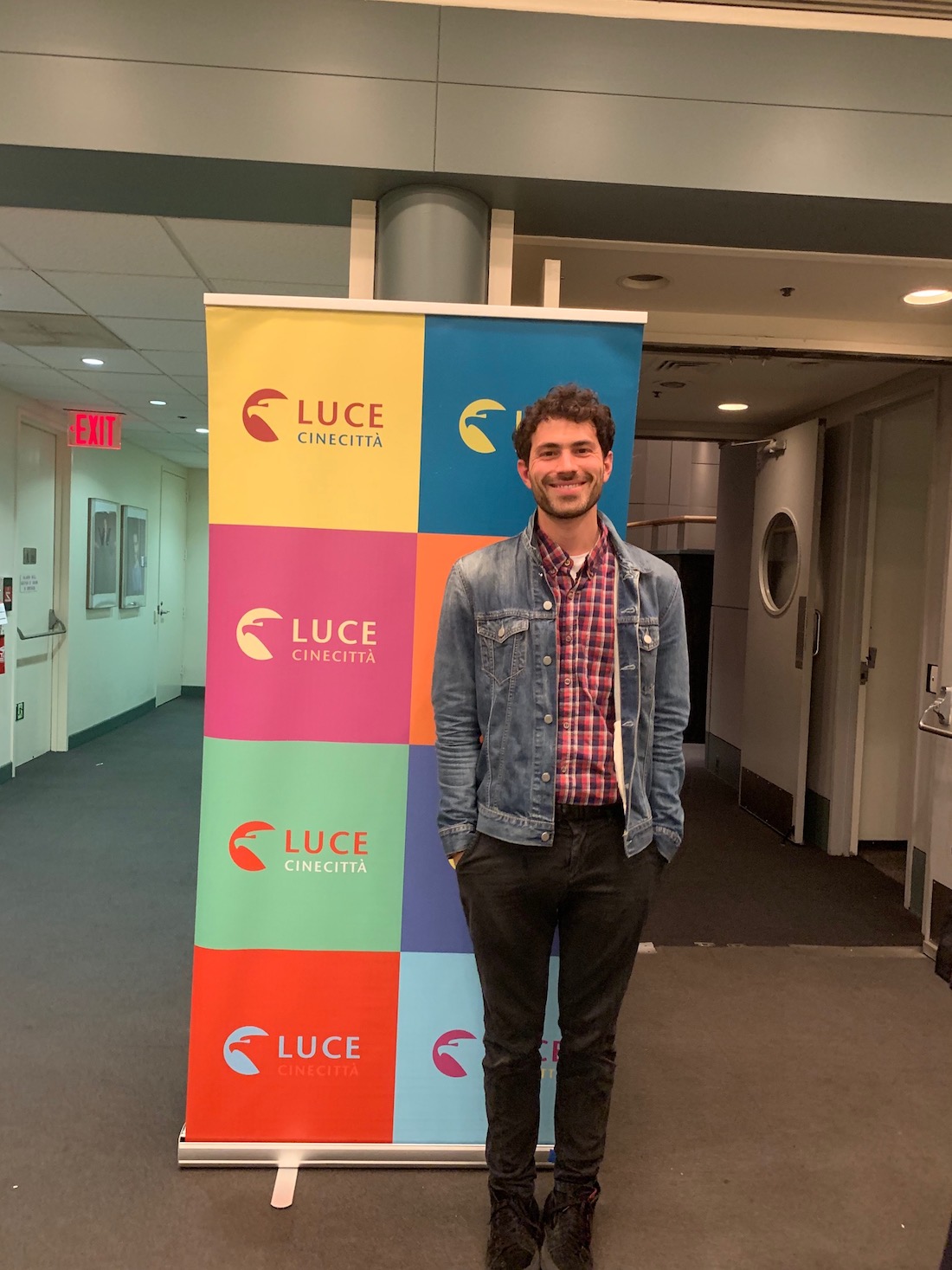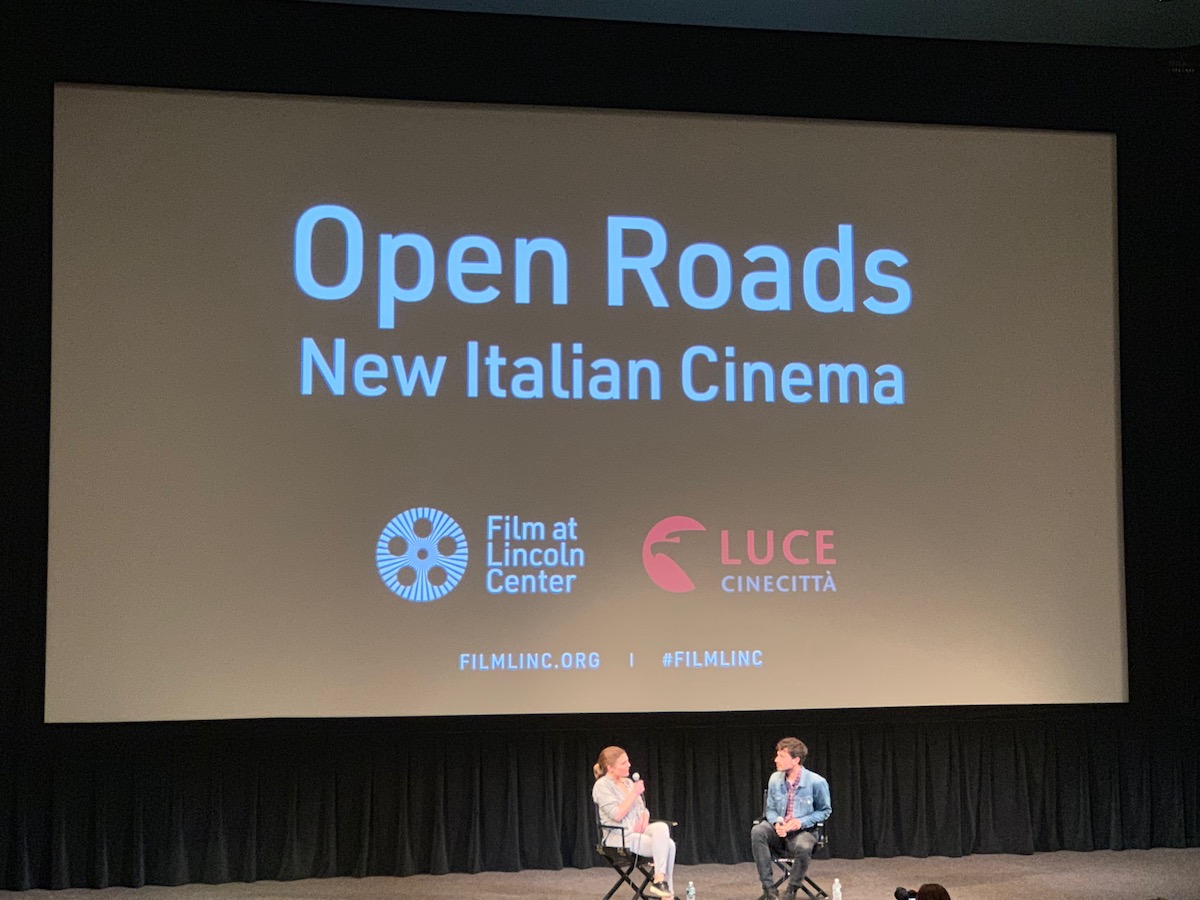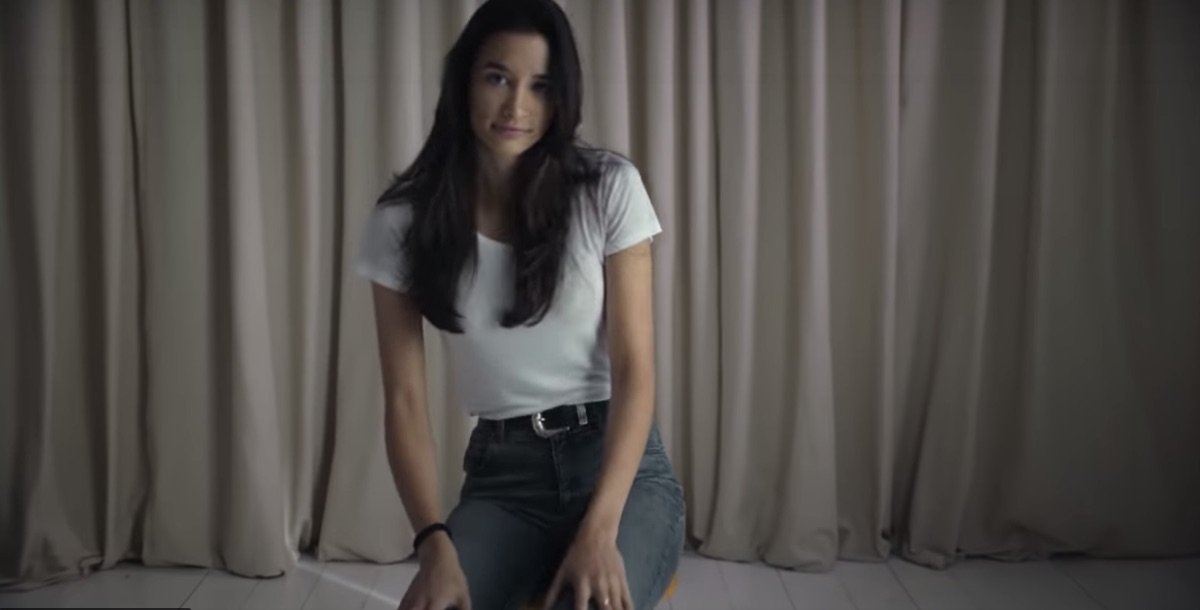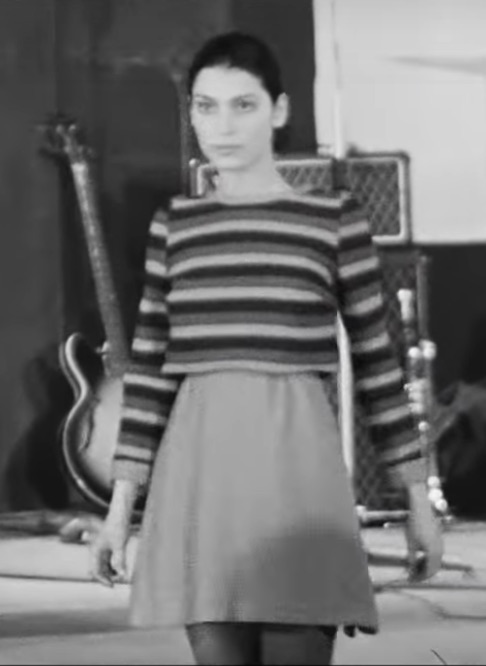Beniamino Barrese’s directorial debut is in many respects a DIY affair. The young cinematographer fills the role of director, actor, sound operator and cameraman admirably, not to mention handler of a less than willing subject. Benedetta Barzini, Barrese’s mother and the focal point of the film, has spent decades in the limelight as one of Italy’s first super models and now wants nothing more than to retreat into obscurity.
Barrese has other ideas. He doggedly follows his mother from behind the camera, weathering the occasional torrent of expletives to document her day-to-day. And, it seems, to keep her from her long- sought disappearance for a while longer.
The result is a technical and aesthetic triumph that succeeds in at least raising intriguing questions about our relationship to the media that we consume and its production. “Disappearance’s” flaw may be that it fails to provide any convincing answers to these questions. Although an enjoyable and stylishly executed portrait of a fascinating and complex subject in Barzini, the film seems content to leave open-ended many of the conflicts that it stirs up. Art is not science, however, and exploring the human condition, even without providing answers, can be just as worthwhile as attempting to diagnose it.
Luckily, we had a chance to sit down with Barrese and discuss the ins and outs of his promising debut before its New York premier at Lincoln Center.

You’re in town for the Open Roads festival at Lincoln Center. How has the festival circuit been treating you so far?
“It’s been a bit overwhelming because it was my first film. I’ve been working on it for a few years, but also, it’s a film that I have had inside me since I was a baby, looking up to my mom as a sort of challenge and inspiration at the same time.”
I imagine you’re glad now that it’s done and out of your hands.
“When it’s something so personal it’s difficult to close it, because it’s not like something that you can look at objectively. When you love the subject of your film so much you always compare your result with the love and the emotion that you have, and it can never stand the comparison. So, it’s more about learning to let go and to accept the limits that you work within.”
You did a lot on this film. What was it like taking on all these roles for the first time, on your first film no less?
“Well in a way it was beautiful, you don’t have all the mediation that is implied in working with a crew. You can just be very essential and to the core. At the same time, I didn’t think to be a character in the beginning. I thought my mother would be the character and I would be the eyes. But then I thought, “Okay, this story is actually about the relationship between this woman, her image, and the people that produce her image,” so I had to become a character in the story.”
You mentioned the conflict in your roles as mother and son. What exactly is that conflict and what others did you seek to explore in the film?
“I had so many urges pushing me in one direction or the other. But it’s good that you don’t know in the beginning, because sometimes the more that you’re aware, the more difficult it is to do things. Your mind gets in the way and you overthink it. When you are the character and the camera man, if you think too much you ruin your spontaneity–which is a gift when you make documentaries.
With my mother, I told her this was going to be a film about her lectures in the beginning. That was my first interest. I was thinking that this was a huge legacy that I was exposed to and that it’s so important to preserve this point of view on being a woman, being a person and an autonomous person.”
The purpose and project of the film evolved over time, then.
“Yes, and the editing too is a hugely creative part. Because all of this theory is one thing, but then the practice – what you shot and what is in the actual scenes that you have and how you use them— that changes.”
On the topic of theory, one of the things that most struck me about the film was how dialectical it is; you and your mother have opposite perspectives on the essential nature of images and film and their role in society. But by film’s end, you reach a sort of understanding, if not agreement. How do you think the film succeeds in resolving the larger conflict over images and exploitation?
“Totally, this was in the back of my mind all the time. I think there’s a different answer for me and a different answer for my mom. I was trying to–and I guess I managed to prove at least to myself– that you can do something positive with images. We are exposed to so many images and, most of the time, they belong to a culture that wants you to buy this, or have this or that opinion, and uses images to “inform” you. But of course, there is beautiful work and inspiring images, and I wanted to try to do that.”

Tell me about the decision behind the opening scene, the one where Benedetta, has been given an award and is not happy about it.
“It’s always so difficult to choose an opening scene. The editor and I needed to establish her character as well as our relation, and to quickly convey where she stands as a public figure. The question was: how do we present this woman? In the film she appears first through the girls who are being cast for her, and then through little pieces of her body. That sequence is somewhat abstract, but then we see her, and she is very aggressive and against everything. This shows that our relationship is a little bit tricky. For me, the journey of the film is rather like going from a fight to a collaboration. So, this scene served many of these purposes.”
It is kind of ironic that you chose to work in film and photography, of all things, given your mother’s strong views on that particular subject. How did that come about?
“She never really approved of it. She always wanted me to study because she had never had the chance. She belongs to a very cultivated, “high-end” Italian family. But she refused everything that came from that family— their political views, their wealth. She basically didn’t get any inheritance from them, and she never claimed it; she hated her family and they didn’t like her very much, I don’t think, for different reasons. She didn’t go to school after she was 13 because of her illness. She was anorexic, so they pretty much put her in various mental institutions because, back then, people didn’t know what this was. They thought she was mad. So, she urged me to please study. As a result, I first obtained a degree in philosophy, and then I was able to do whatever I wanted. But if you believe in genealogic trees and that you get a kind of duty from your family, maybe my duty was to heal this kind of conflict.”
Where do you think Benedetta’s extremely critical view of film and images came from, ultimately?
“On the one hand, I think it has to do with the destiny of women, being caged by their appearance and their look. And it’s not just for models. Women have been painted, but they’ve rarely been the painter or photographer. And even if they are the photographer, or the writer or the politician, they perform all these roles within a cage that has been built by the male gaze, by patriarchal power. So, I find that her reaction against the lens has to do with a refusal of the objectification that women have been subjected to historically.
That’s one thing. But in the film she doesn’t give me this reply. She says I don’t like images because they petrify things within a limited boundary, and so they’re a lie. I think that’s a good lesson for today. We think that what we see is true, and this is instinctive, but what people choose to show is always a choice, and it’s always limited and it’s always fake. Like the beauty that women are made to strive for is most of the time artificial. There’s the presumption that we can see reality, but we can see just a portion of it at any one time. I think she’s aware of that.”
The subject matter of the film is quite political then, but you don’t approach it from an explicitly political point of view. However, it’s always under the surface.
“I hope so.”

Certainly. I’m curious to know how you would describe your mother’s politics and how they’ve influenced your own or informed your filmmaking.
“Obviously, she belonged to the communist party, or maybe if not actually belong to it, she was always on that side. Also, she’s worked in the feminist movement and she has a socialist view. It’s the idea that we can form a community that is fair, where wealth is evenly distributed and where there is support for people who have less. This seems to be out of date today; it’s so sad to see how the Left is more or less disintegrating across the world.
What she tells her students is that you are unique, and you should try to be an individual. This means to be critical and to think. That’s at the bottom of her conviction, she believes that we can really think and that this makes a difference. This is what she is trying to teach her students and this is also what I am trying to learn. You’re never going to manage to be pure.”

Was this part of the rationale behind the casting shots, where you have young actresses auditioning to play your mother and are giving them directions from behind the camera? As far as purity goes, I understood them as a sort of mea culpa for reproducing, even in a harmless form, this gendered, exploitative dynamic that has long existed in film and that your mother so stridently criticizes.
“Yes, as for the casting, I’m very fascinated by this moment. It’s when a person is the most vulnerable. I mean, there’s nothing – it’s just a wall, the person in front of it and a camera. It was the purest way in which I could investigate the feeling that my mom must have felt when she was a young girl in New York. I think it’s so soul destroying to go through a casting. I love this dynamic of power, but there is a way that you can learn to use that power differently. I don’t think that I have learned necessarily, but people are there and they expose themselves because they love to do their job most of the time. It’s not just about vanity. So how do you find a compromise and how do you try to be less exploitative becomes the question. I think this is especially important for documentaries, because you are trying to tell a story on the real skin of people.“
What is it that makes producing a film or photo so exploitative?
“There is a kind of violence that can be used to produce images. If you are a part of that, like for a model, it can leave a mark on you, as it did for my mom. This was just another exploitative moment for her. She doesn’t enjoy the camera. In one shot that we cut from the film, she says “the lens is the enemy” and this is her belief. Nevertheless, she told me, “thank you for making this film.”
That must be a little bit of vindication.
“A little bit, yes. But again for me it was more about raising the question. We tend not to realize what is implied when we take a photo. There is a relationship between what you live, and when you take a photograph. As my mom says, “[when you] delegate everything to take a photo, you’re not really living.”

It’s a step removed.
“Yes! We give to technology what we don’t really know how to handle anymore. As with Google Maps, we ask Google Maps to bring us to a place and we lose our ability to just navigate.”
On this point of images taking on different and conflicting roles, was the choice to use multiple recording mediums made consciously as a sort of reference perhaps to this variability? Can you explain your thinking there?
“It’s totally that, and thank you for picking up on that. For me, the changes in format also correspond to a change in our approach to image-making and to images. Once upon a time cinema was a lot more expensive and exclusive, and producing an image was a work of craft and love. The celluloid film implies, really, an addition to reality. There is another layer of something material. Progressively, we are going to a poorer image that obviously democratizes it, but also makes it lose a lot of value because we can now reproduce every moment of our lives. The more you can do, the less you put thought and intention into producing something.
So yes, I put my foot down when I decided I to produce some images on film because it was a really small film and we didn’t have any money. People didn’t understand, they thought it was a luxury and that I was being a little bit snobbish. But it’s a statement. It’s a different kind of image and I wanted to produce that kind of beauty. That’s my feeling. I’m not saying digital can’t be beautiful— it is a tool. You can choose to make a drawing or you can choose to use oil, and it’s good that we can choose.”








